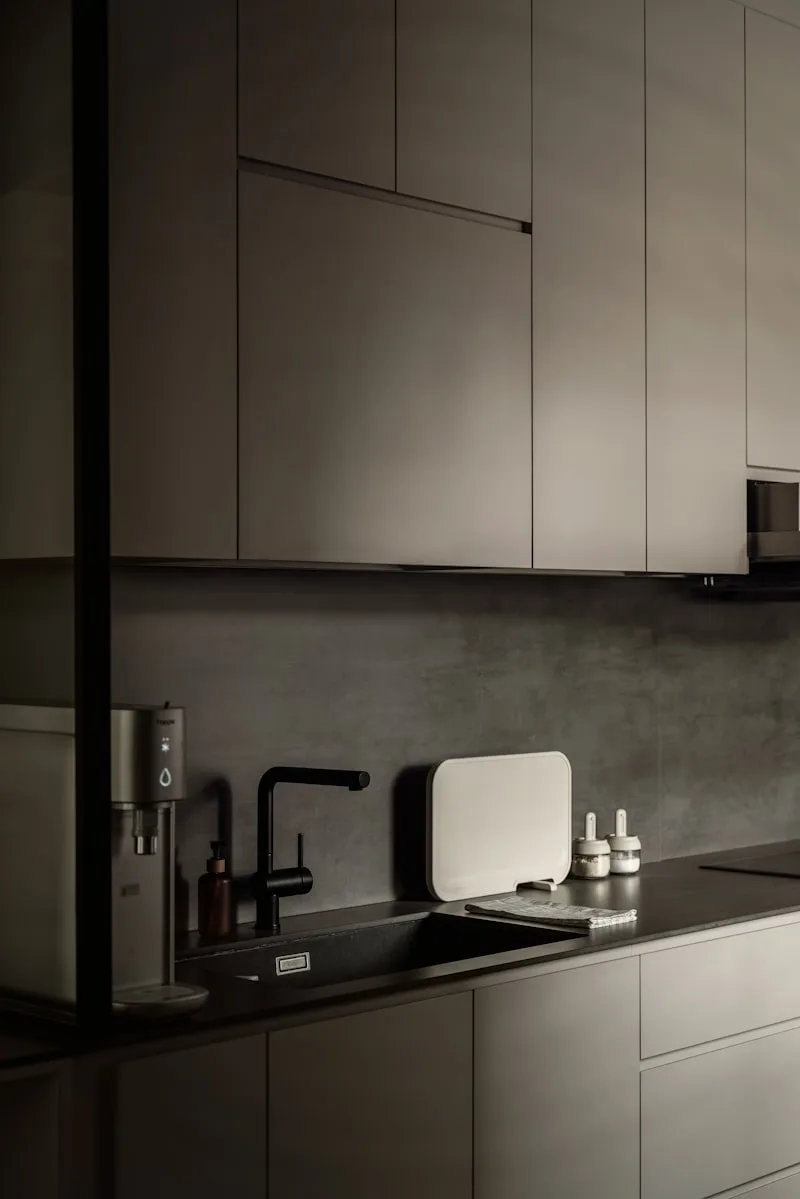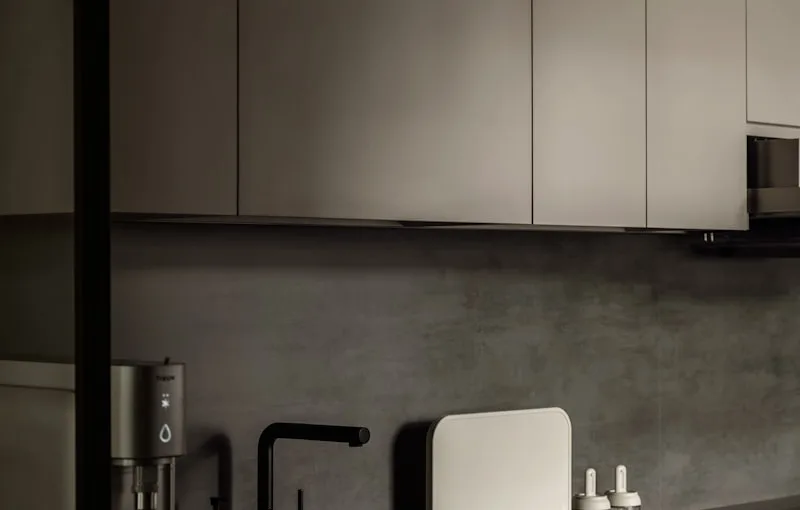Think of your kitchen cabinet as a sturdy friend who’s always there to lend a hand. The weight capacity largely hinges on the cabinet’s construction. Solid wood cabinets, for instance, are like the bodybuilders of the kitchen world—they can handle a lot more than their particleboard counterparts. If you’re planning to store heavy items like cast iron skillets or a collection of cookbooks, you’ll want to ensure your cabinets are up to the task.
Now, let’s talk about the shelves. Many cabinets come with adjustable shelves, which is fantastic for flexibility but can also affect weight distribution. If you load up a shelf unevenly, it’s like putting all your groceries on one side of a shopping cart—it’s going to tip! So, spreading the weight evenly is key to keeping everything intact.

Also, consider the mounting. A cabinet that’s securely anchored to the wall is going to be much more reliable than one that’s just hanging out there. It’s like the difference between a well-built bridge and a rickety old plank—one can handle the load, while the other might give way at the slightest pressure.
The Weighty Truth: How Much Can Your Kitchen Cabinets Really Support?
Most kitchen cabinets are designed to support a fair amount of weight, typically around 100 pounds per linear foot. That means if you’ve got a 3-foot cabinet, it can usually handle about 300 pounds. But hold on! This isn’t a free-for-all. The type of materials used, the quality of the construction, and how well they’re installed all play a crucial role. Think of it like a sturdy bookshelf; if it’s made from particleboard, it’s not going to hold up like one made from solid oak.
Now, let’s talk about the contents. Are you cramming in heavy cast iron skillets and a mountain of canned goods? Or are you more of a lightweight, with just a few spice jars and some dish towels? The weight distribution matters too. If you’re stacking everything on one side, you might be asking for trouble. It’s like trying to balance a seesaw with a heavy kid on one end—eventually, something’s got to give!
Kitchen Cabinets Under Pressure: Discovering Their Weight Limits
Most kitchen cabinets are designed to support a fair amount of weight, but there’s a catch. The materials used—like particleboard, plywood, or solid wood—play a huge role in determining how much they can bear. For instance, solid wood cabinets are like the bodybuilders of the kitchen; they can take on a lot more than their particleboard counterparts, which might buckle under pressure. So, what’s the magic number? Generally, a standard upper cabinet can hold around 100 pounds, while lower cabinets can handle up to 500 pounds. But don’t just take that at face value!
Have you ever thought about how the weight is distributed? It’s not just about slapping everything inside and hoping for the best. If you cram all your heavy items on one side, it’s like putting all your weight on one leg—eventually, something’s gotta give. To keep your cabinets in tip-top shape, it’s wise to spread the load evenly.
From Dishes to Dry Goods: What’s the Maximum Load for Your Kitchen Cabinets?
Think about it: your cabinets are like the unsung heroes of your kitchen, quietly supporting your culinary adventures. But if you start cramming in every pot, pan, and bag of flour you own, you might be setting yourself up for a disaster. Most standard kitchen cabinets can typically hold around 100 pounds per shelf. That’s a lot of weight, but it’s essential to distribute it wisely. Imagine stacking all your heavy cast-iron skillets on one shelf—yikes! You could end up with a sagging shelf or, worse, a cabinet that gives way.
Now, let’s talk about dry goods. Those bags of rice, flour, and sugar can add up quickly. If you’re a home chef who loves to stock up, consider using airtight containers to keep things organized and manageable. Not only do they save space, but they also help you avoid the dreaded avalanche when you open the cabinet door.
Heavy Lifting: A Deep Dive into Kitchen Cabinet Weight Capacity
Most kitchen cabinets are designed to hold a fair amount of weight, but not all cabinets are created equal. Think of them as the unsung heroes of your kitchen, quietly supporting your culinary adventures. Typically, upper cabinets can hold around 100 pounds, while base cabinets can handle a whopping 500 pounds or more. But here’s the kicker: the actual weight capacity can vary based on materials, construction methods, and how they’re installed.
Imagine your cabinets as a sturdy bridge. If the bridge is built with high-quality materials and reinforced properly, it can support heavy traffic. Similarly, cabinets made from solid wood or high-grade plywood tend to be more robust than those made from particleboard. And let’s not forget about the installation! A cabinet that’s securely anchored to the wall is like a bridge with strong pillars; it can bear more weight without wobbling or collapsing.
So, what does this mean for you? If you’re planning to store heavy items like cast iron skillets or bulky appliances, it’s essential to know your cabinet’s limits. You wouldn’t want to overload them and risk a disaster, right? By understanding the weight capacity of your kitchen cabinets, you can create a functional and safe space that meets all your cooking needs.
Frequently Asked Questions
What is the weight capacity of standard kitchen cabinets?
Standard kitchen cabinets typically have a weight capacity of 150 to 200 pounds per shelf, depending on the material and construction. It’s important to distribute weight evenly and avoid overloading to ensure stability and longevity.
Can I store heavy items in my kitchen cabinets?
Storing heavy items in kitchen cabinets is possible, but it requires careful consideration of the cabinet’s weight capacity and construction. Ensure that the cabinets are made of sturdy materials and are properly anchored to the wall. Distribute weight evenly and avoid overloading shelves to prevent damage or accidents.
How can I reinforce my kitchen cabinets for added support?
To reinforce kitchen cabinets for added support, consider adding L-brackets or corner braces to the inside corners. Use plywood or solid wood strips to create a stronger base and attach them to the cabinet frame. Ensure that screws are properly anchored into the wall studs for stability. Additionally, check for any loose screws or hinges and tighten them to enhance overall strength.
What factors affect the weight capacity of kitchen cabinets?
The weight capacity of kitchen cabinets is influenced by several factors including the materials used in construction, the quality of the hardware, the design and structure of the cabinet, the method of installation, and the distribution of weight within the cabinet. Proper reinforcement and adherence to manufacturer guidelines also play a crucial role in determining how much weight a cabinet can safely hold.
How do I determine the load limit for my kitchen cabinets?
To determine the load limit for your kitchen cabinets, check the manufacturer’s specifications, which often provide weight limits. Consider the materials used in the cabinet construction, as solid wood typically supports more weight than particleboard. Additionally, assess the cabinet’s mounting method and the condition of the wall it is attached to. For safety, distribute weight evenly and avoid overloading shelves.
